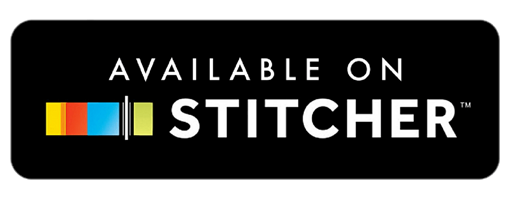Speak Clear English - Enroll Today
Lição de Inglês do hoje:
As 5 principais dicas de pronúncia para reuniões virtuais com Jennifer Kumar
Artigo escrito por Andrea.
A aula de hoje é um pouco diferente do normal porque tenho um convidado especial comigo. Você pode ouvir junto com meu vídeo do YouTube ou ouvir usando a versão somente áudio.
Veja esta lição…
Ouça a lição…
Vamos começar
Hoje temos um episódio muito especial do podcast, porque temos uma convidada no podcast hoje, Jennifer Kumar do AuthenticJourneys.info. Jennifer Kumar é a diretora administrativa da Authentic Journeys, onde oferece orientação e treinamento intercultural para equipes remotas e virtuais da Índia e dos Estados Unidos.
Jennifer mora nos Estados Unidos, mas passou muitos anos morando na Índia, onde treinou mais de 3.500 profissionais globais em habilidades interculturais no local de trabalho. Além da experiência de treinamento intercultural de Jennifer, ela também possui um certificado em TESOL da Universidade do Arizona.
Bem-vinda ao podcast, Jennifer!
Como todos nós já sabemos, o coronavírus se espalhou por todo o mundo. Acabou de ser classificada como uma pandemia, o que significa que é uma doença que se espalhou para um país inteiro, ou pelo mundo inteiro. Por causa do coronavírus, as empresas estão tendo que repensar a forma como fazem negócios. Muitas empresas como Amazon, Facebook e outras exigem que seus funcionários trabalhem em casa. Isso significa que todas as nossas interações de negócios estão mudando para uma plataforma virtual.
Essa é uma grande mudança para muitas pessoas e pode ser especialmente difícil para quem não fala um inglês claro. Quando estamos cara a cara, é mais fácil para as pessoas nos entenderem, mas quando estamos em uma reunião virtual, em uma plataforma como Webex, Google Hangouts ou Zoom, há algumas coisas que precisamos fazer para garantir que as pessoas podem nos entender e nós podemos entendê-las.
É por isso que hoje temos um especialista em treinamento profissional no podcast. No podcast de hoje, vamos falar sobre as 5 principais dicas de pronúncia de Jennifer para reuniões virtuais.
Por causa do coronavírus e do distanciamento social, muitas pessoas estão mudando para plataformas virtuais em muitos países, mas podem não estar acostumadas com ele. Mesmo que você tenha participado de reuniões virtuais ocasionais, pode não estar acostumado a isso em todas as reuniões, todos os dias.
As 5 principais dicas de pronúncia para reuniões virtuais:
#1 – Não fale muito rápido ou muito lento Enunciar.
Não queremos falar muito rápido e não queremos falar muito devagar. Queremos parecer naturais para que os outros possam nos compreender. São tantos sotaques, mesmo dentro de um único país, e há tantas pessoas que não estão acostumadas com o formato virtual, por isso temos que falar em um ritmo moderado. Jennifer dá uma demonstração hilária no vídeo de como soa falar muito rápido ou muito devagar. Não queremos parecer robóticos ou não naturais. Falar em velocidade média também pode ajudar a minimizar um sotaque forte.
Um grande erro que muitos alunos de segunda língua cometem é falar rápido demais. Eles ouvem falantes nativos falando rápido e, portanto, acham que serão melhor compreendidos se falarem rápido também. Na verdade, é realmente mais desafiador para falantes nativos entender o que você está dizendo quando fala muito rápido. É contra-intuitivo – não o que você pensaria – falar mais devagar quando o inglês não é seu idioma principal, mas desacelerar ajuda os outros a entendê-lo melhor, especialmente no ambiente virtual.
Se você é um falante nativo de inglês e está em uma chamada virtual com outras pessoas cujo idioma nativo não é o inglês, isso NÃO significa que você deve falar dramaticamente muito devagar ou gritar no microfone. Queremos falar em uma velocidade normal – nem muito rápido, nem muito lento.
Para falantes não nativos de inglês, você pode querer falar em seu gravador de telefone e praticar dizer frases em velocidades cada vez mais lentas. Então, se você for corajoso o suficiente, pode perguntar aos outros que velocidade eles entendem melhor. Muitas vezes temos medo de pedir feedback aos outros, mas é muito melhor fazer isso do que apenas deixar que os outros pensem: “Simplesmente não consigo entender essa pessoa”. Os ouvintes preferem ser capazes de dar feedback sobre como você fala para que possam ser melhor compreendidos.
#2 – Projete sua voz
Quando você está em um ambiente individual, pode não precisar se preocupar em projetar (aumentar o volume) de sua voz. No entanto, se você estiver em uma chamada em grupo, a projeção é necessária. Isso é especialmente verdadeiro se você estiver compartilhando um microfone com outras pessoas ou se o microfone estiver sobre a mesa. Sempre saiba onde está o microfone. Se você tem controle sobre onde o microfone está, certifique-se de que ele esteja perto de sua boca, mas não muito perto de sua boca.
#3 – Mantenha uma boa postura
Quando estamos em uma reunião virtual, queremos ter o mesmo tipo de boa postura que teríamos se fosse uma reunião face a face.
Quatro ‘Não Fazer’ quanto à Postura em Reuniões Virtuais
- Não se incline nem se curve. Sua voz não soará tão clara e terá uma aparência menos profissional no vídeo.
- Não se incline para alcançar o microfone. Parece estranho e sua voz vai mudar.
- Não se incline muito para trás. Você parecerá entediado e pode estar se afastando do microfone.
- Não mova o microfone para ficar bem próximo à sua boca. A qualidade do áudio será péssima e será mais difícil de entender. Mesmo que você soe mais alto, não ficará claro e áspero. Quando você coloca o microfone bem próximo à boca, as pessoas vão pensar no que você está fazendo com o microfone, e não no que você está dizendo. Jennifer faz uma grande demonstração disso no vídeo.
#4 – Prepare com antecedência
A preparação é a chave para o sucesso nas reuniões virtuais! Reserve alguns minutos antes da reunião para “entrar na onda”. Pense no que você vai dizer, qual é o formato e qual é o seu esboço. Isso ajuda você a ler para a reunião virtual. Uma ideia que você pode tentar é adicionar um post-it ou uma nota virtual ao seu computador com seus pontos de discussão – qualquer coisa para mantê-lo em ordem e no “fluxo” correto é útil.
Se houver palavras ou nomes que serão novos para você naquele dia, leve junto a pronúncia. Olhe essas palavras com antecedência. Você pode pesquisar quase qualquer palavra ou nome no Google para ouvir uma pronúncia. Se você acertar, as pessoas tenderão a respeitá-lo mais.
Use nomes quando quiser fazer a transição das discussões para o próximo tópico. Isso ajuda a impulsionar a reunião e avisa a todos sobre quem será o próximo a falar. Usar nomes ao falar sobre tópicos é uma habilidade vital em reuniões virtuais, porque não podemos fazer contato visual com as pessoas. Por exemplo, você pode dizer: “Andrea, você gostaria de assumir a partir daqui?”
#5 – Ouça e use dicas visuais
Quando possível, dependendo da plataforma, você pode ver todos os participantes ao mesmo tempo. Isso é importante, porque você pode perceber que alguém quer dizer algo antes de você ouvi-lo. Isso o ajudará a evitar falar sobre os outros. Você também pode ouvir as pessoas respirando, o que é uma dica de que querem falar. Considere os ícones “levantar a mão” nessas reuniões, se for uma reunião maior.
Trabalhe para conectar nomes com vozes. Pode ser difícil identificar qual voz combina com cada pessoa, e é por isso que plataformas de reunião virtual como Zoom, Webex e Hangouts listam o nome da pessoa sempre que ela está falando. Isso significa que você pode colocar o nome e a voz juntos, mesmo se não puder vê-los.
Dicas bônus
Entre na reunião 15-30 minutos mais cedo, especialmente se for uma reunião de alto risco. Quanto mais preparado você estiver tecnicamente, mais calmo ficará ao falar. Quanto mais calmo você estiver, mais claro se comunicará.
Se você tiver algum conflito de tempo com os membros da equipe para a reunião, pense antes de como você lidará com isso. Lembre-se de que, se você vem de uma cultura de horário flexível, como Índia ou Brasil, ainda precisa iniciar aquela reunião virtual no horário. Isso é especialmente verdadeiro se você tiver participantes de culturas de épocas rígidas, como Alemanha e Estados Unidos.
Use o botão mudo para que o ruído de fundo não interrompa a reunião ou torne difícil para outras pessoas ouvirem você. Lembre-se que as reuniões virtuais demoram um pouco para se acostumar, então tenha paciência consigo mesmo e se prepare, prepare, prepare. Essas reuniões virtuais começarão a parecer mais normais, como as reuniões presenciais.
Para saber mais sobre como Jennifer Kumar pode ajudar suas equipes a se tornarem virtuais, visite AuthenticJourneys.info. Você pode entrar em contato com Jennifer em info@authenticjourneys.info. Jennifer também é ativa no LinkedIn.
Para falar um inglês mais claro e melhorar sua pronúncia, junte-se a mim no meu curso de pronúncia clara em inglês. Nunca houve melhor altura para aprender inglês online! Acesse StudyWithAndrea.com/speak para saber mais.
Até a próxima, Bom aprendizado!
Andrea
Speak Clear English - Enroll Today

Jhessika Nascimento
Director of International Partnerships
Jhessika Nascimento is the Director of International Partnerships for Study With Andrea and lives in Brasilia, Brazil.
Jhessika is a bilingual teacher of English and Portuguese, studying for a Master's Degree in Strategic Management in Information Technologies at the Universidad Internacional Iberoamericana.
Graduation in Letters - Portuguese and English.
Postgraduate in Teaching in Higher Education.
Postgraduate in Risk Management and Cybersecurity.
Postgraduate Executive MBA in Process Management BPM-CBOK.
Postgraduate in Translation and Proofreading of Texts in English.
The following is a TOEFL Reading practice test to help you prepare for the Reading section of the TOEFL test.
Instructions: Read the sample passage below and then answer the questions that follow.
TOEFL Reading Practice Passage
Gorillas are ground-dwelling, predominantly herbivorous apes that inhabit the forest of central Sub-Saharan Africa. The genus Gorilla is divided into two species: the eastern gorillas and the western gorillas (both critically endangered), and either four or five subspecies. They are the largest living primates. The DNA of gorillas is highly similar to that of humans, from 95 to 99% depending on what is included, and they are the next closest living relatives to humans after the chimpanzees and bonobos.
Gorillas' natural habitats cover tropical or subtropical forest in Sub-Saharan Africa. Although their range covers a small percentage of Sub-Saharan Africa, gorillas cover a wide range of elevations. The mountain gorilla inhabits the Albertine Rift montane cloud forests of the Virunga Volcanoes, ranging in altitude from 2,200 to 4,300 metres (7,200 to 14,100 ft). Lowland gorillas live in dense forests and lowland swamps and marshes as low as sea level, with western lowland gorillas living in Central West African countries and eastern lowland gorillas living in the Democratic Republic of the Congo near its border with Rwanda.
(#1) Gorillas move around by knuckle-walking, although they sometimes walk upright for short distances, typically while carrying food or in defensive situations. (#2) A 2018 study investigating the hand posture of 77 mountain gorillas at Bwindi Impenetrable National Park (8% of the population) found that knuckle walking was done only 60% of the time, and they also supported their weight on their fists, the backs of their hands/feet, and on their palms/soles (with the digits flexed). (#3) Studies of gorilla handedness have yielded varying results, with some arguing for no preference for either hand, and others right-hand dominance for the general population. (#4)
The eastern gorilla is more darkly colored than the western gorilla, with the mountain gorilla being the darkest of all. The mountain gorilla also has the thickest hair. The western lowland gorilla can be brown or grayish with a reddish forehead. In addition, gorillas that live in lowland forest are more slender and agile than the more bulky mountain gorillas. The eastern gorilla also has a longer face and broader chest than the western gorilla. Like humans, gorillas have individual fingerprints. Their eye color is dark brown, framed by a black ring around the iris. Gorilla facial structure is described as mandibular prognathism, that is, the mandible protrudes farther out than the maxilla. Adult males also have a prominent sagittal crest.
A gorilla's lifespan is normally between 35 and 40 years, although zoo gorillas may live for 50 years or more. Colo, a female western gorilla at the Columbus Zoo and Aquarium, was the oldest known gorilla at 60 years of age when she died on 17 January 2017.
Questions
1. According to the passage, gorillas can live in
a. a variety of altitudes.
b. several different countries in Africa.
c. thick forests.
d. lowland forests only.
2. All of the following is true about gorillas EXCEPT
a. they primarily eat smaller animals.
b. they live in a forest habitat.
c. their genetics are similar to humans.
d. their diet consists of vegetation.
3. Look at the word predominantly in paragraph 1. The word predominantly in this passage refers to
a. impulsively
b. unfortunately
c. mainly
d. lastly
4. Look at the word inhabits in paragraph 2. The word inhabits in this passage refers to
a. lives in
b. protects
c. goes
d. works
5. The author implies that
a. most gorillas prefer using their left hand over their right.
b. gorillas rarely walk on their knuckles.
c. gorillas regularly walk upright for long distances.
d. studies haven't solidly proven which hand gorillas prefer using.
6. Why does the writer mention that the eastern gorilla also has a longer face and broader chest than the western gorilla?
a. To validate the importance a broad chest in western gorillas
b. To define the meaning of "broad"
c. To highlight a physical difference between types of gorillas
d. To demonstrate that most gorillas are identical in physical build
7. Which of the following statements is true for BOTH eastern and western gorillas.
a. Both eastern and western gorrilas are brown with red foreheads.
b. Both eastern and western gorrilas have unique fingerprints.
c. Both eastern and western gorrilas have thin hair.
d. Both eastern and western gorrilas have light brown eyes.
8. In Paragraph 3, look at the four numbers (#1, #2, #3, #4) that indicate where the following sentence would be added to the passage.
Such a range of hand postures was previously thought to have been used by only orangutans.
Where would the sentence best fit?
(View all the correct answers below.)
Great job! If you're ready to take your TOEFL preparation to the next level, go to StudyWithAndrea.com/TOEFL.
Answers: 1. d 2. a 3. c 4. a 5. d 6. c 7. b 8. #3
Click on one of the following links to start speaking clearer English!
1) TOEFL MASTER CLASS
2) free mini-course "punctuation mistakes to avoid"
3) Clear English Pronunciation Video Course
4) English Vocabulary - Audio Files & PDF - TOEFL & IELTS
About Andrea
Andrea Giordano is the founder of StudyWithAndrea.com and has taught more than 1,000,000 students from 180 countries. Andrea holds a Master of Education (TESOL) from Shenandoah University, and is the former Executive Director of TESOL and ESL programs at Campbellsville University. Andrea is a proven leader in online English teaching and is driven by her passion to help you speak English clearly.





